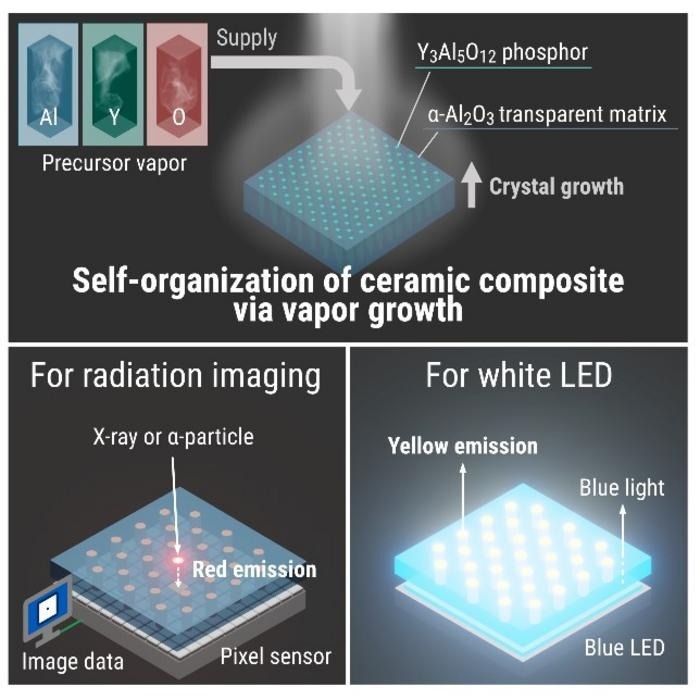The eutectic structure of metals and ceramics occurs when multiple solid phases solidify from a liquid phase, forming a three-dimensional (3D) pattern through a self-organizing phenomenon. Traditionally, it was believed that eutectic structures could only be obtained through a melt-solidification process.
 YNU researchers have developed a chemical vapor deposition technique for synthesizing ordered structures of ceramic eutectic systems. Potential applications include radiation imaging and solid-state lighting. Image Credit: Yokohama National University
YNU researchers have developed a chemical vapor deposition technique for synthesizing ordered structures of ceramic eutectic systems. Potential applications include radiation imaging and solid-state lighting. Image Credit: Yokohama National University
Researchers at Yokohama National University (YNU) have developed a chemical vapor deposition (CVD) process that allows precursor gases to react and generate solid-state composites with ordered structures in a YAG (yttrium alumina garnet)-alumina ceramic eutectic system.
In their study, they observed the growth of spatially ordered rod- and lamellar-shaped YAG crystals within an alumina matrix on a sapphire wafer under Al-rich conditions. Conversely, under Y-rich conditions, they observed the growth of ordered alumina crystals with a YAG matrix. The choice of sapphire seed crystal and the composition of the precursor determined the 3D patterns. Compared with the melt-solidification process, the CVD process expanded the range of chemical compositions that could generate such patterns.
The YAG–alumina chemically deposited eutectics can be doped with additional rare-earth elements, serving as luminescent centers. For example, cerium ions emit yellow light when irradiated with blue LEDs, producing white light for solid-state lighting. Europium ions emit red light for X-ray radiography when exposed to X-rays passing through a semiconductor device. “Our experiments demonstrate potential applications of YAG-alumina chemically deposited eutectics as environmental-resistant LED lighting and high-resolution X-ray imaging,” says Yuri Mitsuhashi, lead author of the study, conducted the experiments while being a graduate student at YNU.
Alumina has long been recognized as a robust refractory ceramic material and is commonly used for structural and optical components. Aluminates, including rare-earth aluminum garnets and perovskites, have been extensively studied as functional ceramic materials, such as lasers, phosphors, and energy materials. “Among the aluminates, rare-earth aluminum garnets and perovskites have attractive properties and fortunately have eutectic systems with alumina,” says Shogen Matsumoto, who built a lab-made X-ray imaging system during his PhD at YNU. He said, “We can synthesize a novel crystal that combines the advantages of alumina and aluminate.”
This finding highlights that the generation of 3D patterns in ceramic eutectic composites can occur not only through the melt-solidification process but also through the vapor deposition process. “CVD is ready to make ceramic eutectic composites as functional or protective layers over substrate materials,” says Akihiko Ito, an associate professor at YNU and the principal investigator. “By contrast, the melt-solidification process, which requires pouring a high-temperature melt exceeding 2,000 degrees Celsius to form ceramic composite coatings on substrates, is impractical. Further research will focus on elucidating the mechanism behind chemically deposited eutectics.”